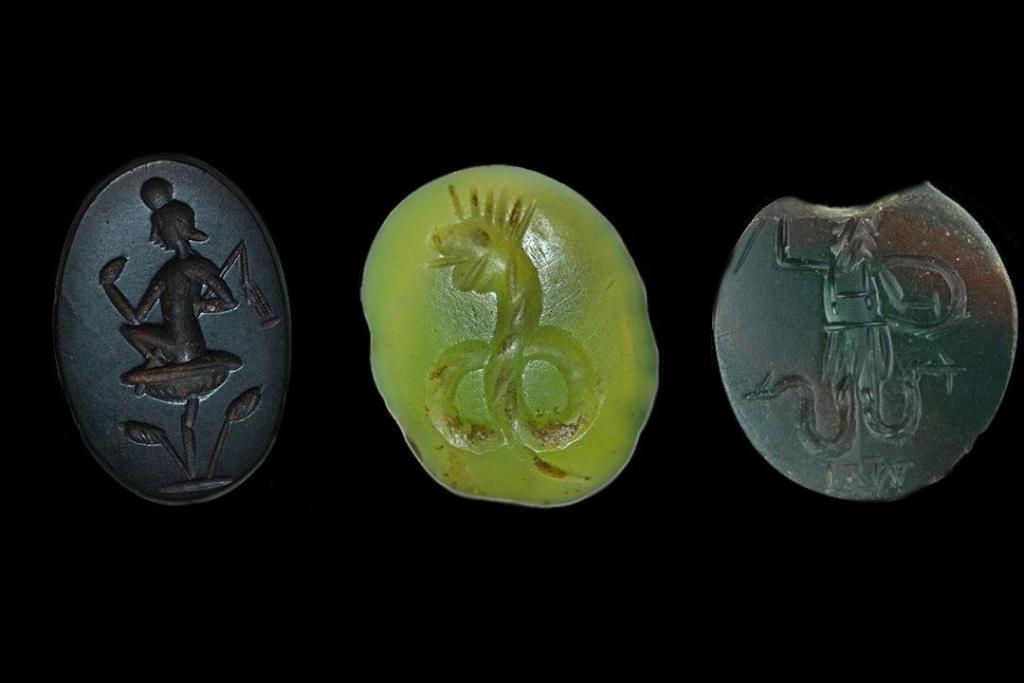
Magical gem stones
Magic gem stones were a type of amulet and may have been used as rings and pendants. Their production began in the late Hellenistic period and reached its peak in the 2nd and 3rd centuries AD. They are an important category as they demonstrate the fusion of Greek, Roman, Egyptian, and Jewish representations and ideas across the Mediterranean world in Roman times. They are also evidence of the popularity of religious activities and practices such as magic.
This is part of the Roman collection.
About the collection
This small collection of magical gem stones and amulets came to World Museum from Joseph Mayer (1803 – 1886), the main donor of the antiquities collections to the museum. Mayer was a jeweller and as expected had a strong interest in precious stones and antique gems. His trade and his travels abroad enabled him to purchase interesting objects from the Greek and Roman world. In 1953 the museum also purchased magical gems from the estate of Dr Philip Nelson (1872-1952), the Liverpool born numismatic and antique collector.
The first important study of magical gem stones was by the American scholar, Campbell Bonner in the 1950s. Since then and thanks to different researchers we know of 4,000 magical gem stones, in different museums across the world: from the Metropolitan Museum of New York, the Prado in Madrid, the British Museum and the Victoria Museum in London, the Fitzwilliam in Cambridge, the Capitoline museum in Rome, the Prague and Budapest museums and many others.
One of the characteristics of magical gem stones are the inscriptions on them: words or sequences of letters in Greek with no particular meaning. Such inscriptions often constitute the magic word or 'logoi', the formula, the magician evoked to achieve the desired result.
The tradition of magic was in eastern Mediterranean transmitted orally but around the beginning of the 1st century AD such traditions had started to be included as written word. The abundance of curse tablets, papyri and precious amulets with magical names and signs are evidence of this change. Although many of the magical gem stones were used as jewellery, there may have also been other uses: for example breaking gem stones may have been part of a healing ritual.
Despite their name magical gem stones were very rarely used to harm someone. Their most common use was to offer protection or to resolve personal health problems: curing indigestion in examples showing the ibis tied by an altar and including the Greek work πέσσε ( meaning digest! ); others showing the uterus offered protection during childbirth and guaranteed fertility.
We rarely know anything about the owners of these stones because only a few of the known gem stones come from specific excavations.
Further reading can be found in:
Árpád M. Nagy, Engineering Ancient Amulets: Magical gems of the Roman Imperial period in the Materiality of Magic, edited by Dietrich Boschung and Jan. N Bremmer, Wilhelm Frink , Paderborn, 2015.
The Campbell Bonner Magical Gems Database
Bonner, C, Studies in Magical Amulets, Chiefly Graeco-Egyptian, Ann Arbor, 1950.
